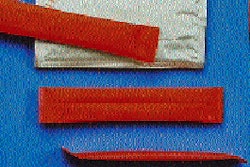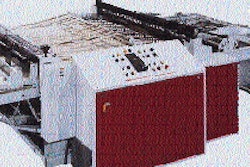"You will never make a cap. It's too hard. You ought to pick something else." With that naysayer's advice resounding in his ears, entrepreneur Kent Louviere launched four years ago a closure molding company-Acadiana Plastics Manufacturing-to serve the majority of this country's hot sauce makers, almost all of them located within 150 miles of his New Iberia, LA plant. Today, he's proven that naysayer wrong, running a cap molding operation with a capacity of 250 million caps a year, supplying almost all U.S. hot sauce bottlers including Bruce Foods, also in New Iberia. Knowing little about injection molding at the outset, how did Louviere succeed? Perseverance, sharp business acumen and proximity to market were certainly critical to Acadiana's success, but so was a highly productive injection molding operation. "You need to produce zero-defect, penny parts in seconds," says Louviere of the highly competitive closure molding business. Central to Acadiana's injection-molding operation is a hot runner system from Incoe (Troy, MI) installed on each of Acadiana's three Mitsubishi injection-molding machines from MC Machinery (Wood Dale, IL). The newest of these machines was undergoing installation at the time PW went to press. Also contributing to Acadiana's customer service is a quick-change mold feature that Incoe added to each molder, cutting mold change time from hours to minutes. Both the hot runner and quick-change molds contribute to a fast, efficient, just-in-time operation. Bruce Foods plant manager Bill Snay concurs. "I could call him now and have a couple pallets on the dock within the hour." Four molds Since most of Acadiana's customers use bottles with narrow neck finishes, the firm molds just four cap sizes, in a variety of colors. Sizes include 13/425, 18/400, 18/410 and 24/414, and weights range from 0.7 to 2 g. Bruce Foods uses the 13/425 cap for its 2-, 3- and 6-oz sizes of Louisiana hot sauce, and in August '94 started buying the 24/414 closure for its 12-oz hot sauce. Acadiana supplies caps in red for the regular product and gold for the Louisiana Gold brand. Acadiana pumps out polypropylene caps on three injection-molding machines that run 24 hours a day, 7 days a week. The newest, a Mitsubishi MJ 320 with 320 clamping tons, was purchased in August '94 and was being installed at press time. The second most recent, a Mitsubishi MJ 270 (270 clamping tons), went online last fall, and the first machine, a Mitsubishi MS2 170 (170 clamping tons), launched the company's operation in '91. The hot runner, which is a manifold assembly installed between the machine nozzle and the cavity blocks, is designed to keep plastic in a molten state on its way to the mold, right up to the gate through which it's injected into each cavity. The hot runners are considered part of the mold, and are swapped in and out accordingly when there's a mold change. However, Acadiana saves money by using the same hot runner for both the 18/400 and 18/410 molds since the cavities are the same size, although both molds can't be used simultaneously. The 13/425 and 24/414 each have their own dedicated hot runner systems. Each mold has 32 cavities. By contrast, traditional cold runner/three-plate mold systems require the user to wait not only until the part cools, but the plastic in the cold runner as well. The hardened plastic in the runner must then be sheared from the part by a moving plate and ejected. That material must then be reground and reused. Fast runner With a hot runner, the main advantage is speed, since the only delay is in waiting for the caps to cool, not the plastic in the runner. "In this business, tenths of a second are dollars," says Louviere. "If my cycles were one-tenth of a second longer, we'd reduce profits by tens of thousands of dollars a year." For each 32-cavity mold, he reports cycles ranging from 9 to 13.5 seconds (from 142 to 213 caps/min) for the smallest to largest caps. Without the hot runner, cycle times might be up to twice as long, he estimates. Better quality closures are another benefit, thanks to tight control of temperature and pressure. "From the first cavity to the last, there are subtle differences in the way the plastic behaves," Louviere explains. "You need to control the temperature in every cavity to produce quality caps consistently." Incoe's system provides control to within 1° F, thanks to cast heaters that provide efficient heat distribution throughout the entire melt channel. The temperature controllers save energy and reduce stress on the heaters by using only a percentage of heating energy to maintain the set point, versus other controllers that adjust temperature by turning heaters either on or off. The runner also balances the various pressures involved in the injection-molding process. "All your injection pressures and hold pressures are exactly the same on each gate," explains Louviere. "You're getting an even fill, an even distribution. Plus you're freezing the molecules evenly so you're not molding in stress by having higher pressure on one part versus lower pressure on another." The result is parts that are molded to within a 1/1ꯠ" tolerance every time. That's important since a single off-spec cap could jam in a customer's capper, causing downtime. Bruce Foods' Bill Snay reports that the closures purchased from Acadiana are as good or better than caps it has bought from previous suppliers. "In the past, we've had several different problems with flashing on the parting line, or what we call 'angel hair,' which comes off where the cap connects to the runner," says Snay. "Those types of defects give us problems feeding through the cappers." He reports no such problems with Acadiana's caps. Other hot runner benefits include eliminating regrind, apart from rejects, which are scant. "It's a pain in the neck, not to mention it could contaminate your process," says Louviere. Color changes can be completed faster too, and that helps Louviere stay responsive to his customers. "We can purge our hot runner system, change colors and be producing quality caps in about 30 minutes," he says. Full solution Louviere chose Incoe because it has long been a player in the specialized plastics tooling business and provided a full hot runner solution, including the whole injection half which consists of the hot half of the mold. Acadiana received the hot runner completely wired and assembled. Acadiana's moldmakers simply built the cavity blocks to Incoe's heater specifications. The hot runner itself consists of a heated manifold that's attached to the cavity blocks built by the mold maker. The manifold/cavity combination make up the entire mold, which is clamped directly to the injection molder's machine platens. In operation, the molten PP resin, from multiple suppliers, is pushed by a rotating screw in the machine's barrel through a machine nozzle that's seated against Incoe's manifold. The manifold consists of a series of passageways leading to 32 separate bushings that are attached to each of the 32 cavities. The bushings, which carry the molten plastic up to the gate through which the material is injected into the cavities, are externally heated by their own cast heaters. Those heaters are in turn controlled by 32 separate temperature controllers, which are in addition to the two temperature controllers for the manifold. That separation of temperature control is at the heart of the hot runner's ability to maintain precise temperatures right up into the cavity. Although the plastics industry had a bad experience with hot runners due to poor temperature control when they first came out several years ago, Acadiana has not experienced any significant electrical or mechanical failure since the beginning. "Hot runner systems have come a long way," Louviere says. "They're not like they used to be. They're very reliable-their electronics are reliable, their heaters, their thermocouples, everything." Louviere estimates Acadiana runs at 98% or 99% efficiency. Fast response Acadiana's quick-change molds allow the molder to easily accommodate special orders and just-in-time delivery. The technology permits one person to swap the 3ꯠ-lb molds in 20 minutes, versus two people taking three hours under normal conditions. Consisting of hydraulic clamps bolted to the mold and quick-disconnect systems for air and water mounted to the machine, the quick-change mold system "is simply a means of locking a mold into place mechanically, hydraulically and electrically," explains Louviere. To change a mold, an operator disconnects the air and water lines, turns a key switch which releases the hydraulic clamps, and rolls out the old mold onto a forklift. The new mold is then rolled in, hooked up to air and water, and clamped to the machine by turning the key switch. Acadiana's changeover frequency varies, depending on the production schedule, but Louviere says it's usually not more than once a shift. What price heat? The efficiency the hot runner brings to Acadiana's operation doesn't come without cost. Louviere says each hot runner represents an investment of $50ꯠ to $75ꯠ. Nevertheless, there's a payback, he says. "Taking into account efficiency, less downtime, no regrind and faster cycles, I'd say you have a 50-percent higher return on investment compared to a three-plate mold." At that cost, is it worth it? "I just think it enhances all of the many parameters involved in molding caps, and it just makes it so much easier for me. It's a big capital expense to get into when you're first starting out, but it's worth the money."























